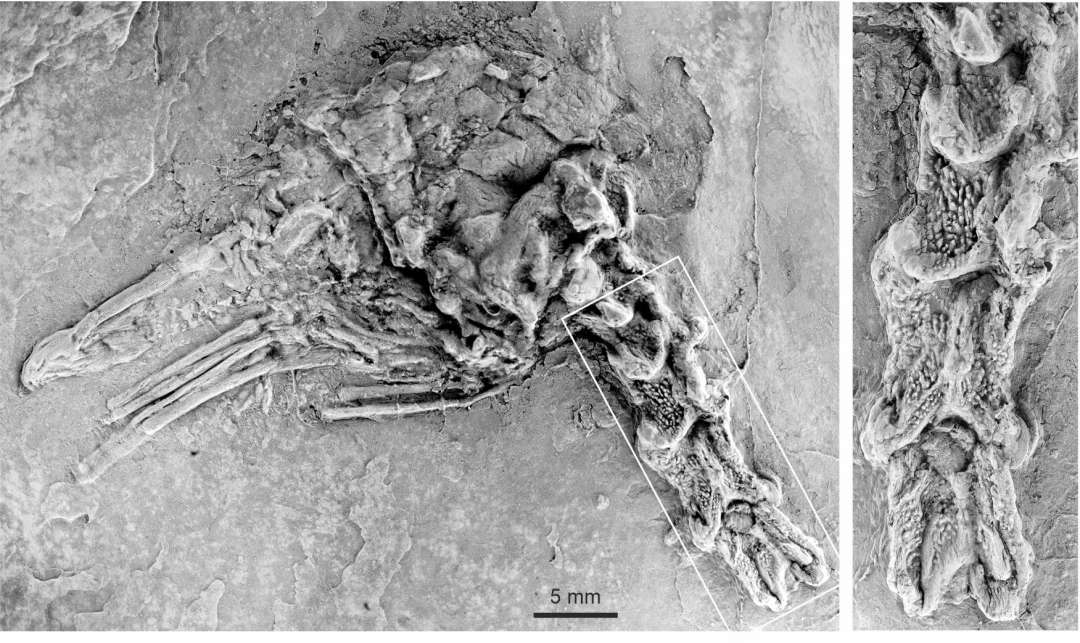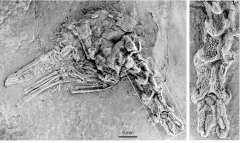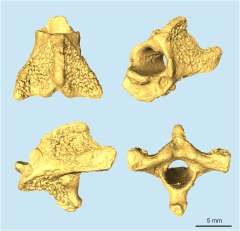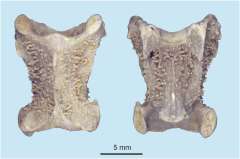Fossil Birds: A Hard Bone to Crack
40 to 50 million years ago, armor-like cervical vertebrae likely offered certain birds protection from predators
Together with an international research team, Senckenberg scientist Dr. Gerald Mayr has examined unusual skeletal structures of various European bird fossils from the Eocene. The bone surfaces of the approximately 40- to 50-million-year-old cervical vertebrae show conspicuous tubercles, whose origin as yet remained elusive. In their study, recently published in the “Journal of Anatomy,” the scientists conclude on the basis of micro-computed tomography analyses that the tubercles may have served as part of an internal “armor” to protect against deadly neck bites from mammalian predators.
Over the course of evolution, many animal species have developed different strategies to defend themselves against predators – from sophisticated camouflage and venom to a protective armor. A research team led by ornithologist Dr. Gerald Mayr from the Senckenberg Research Institute and Natural History Museum Frankfurt has now identified an unusual variant in a group of Eocene birds. “We have examined a number of fossil avian cervical vertebrae, all of which exhibit a pronounced tubercular surface structure – a striking feature that is unknown in modern birds. We hypothesize that these tubercles are part of a protective ‘reinforcement’ of the cervical spine,” explains Mayr.
Such cervical vertebrae covered by conspicuous tubercles were first observed in roughly 48 million-years-old fossils of various bird species from the Messel Pit in Hesse, and subsequntly they were also identified in similar finds from the London Clay Formation with an age of up to 53 million years. As yet, the origin of these unusual structures remained obscure. One possible explanation discussed was that they might represent pathological features. “Understanding the phenomenon was impeded by the fact that these fossil vertebrae were initially only available in the form of flattened fossil remains. For the first time, we now had the opportunity to examine four additional, three-dimensionally preserved specimens from the Quercy site in France,” reports Mayr. High-resolution images of these approximately 37-million-year-old cervical vertebrae have been generated using micro-computed tomography and enabed a detailed examination of their structure.
“One of the arguments against a pathological origin of the tubercles is that they are absent from functionally critical structures of the vertebrae such as the articular surfaces,” says Mayr. “The micro-CT scans also show that the bone substance of the cervical vertebrae is very dense. In contrast, the cervical vertebrae of recent birds – apart from a few specialized divers – have air-filled cavities and are much more lightweight and fragile. The tubercles, along with the dense interior of the bone, presumably evolved to further strengthen the protective sheath around the vital arteries, nerves, and spinal cord that run here.”
The skull of the African Maned Rat Lophiomys imhausi, which is covered with similar tubercles, indicates that comparable structures can develop under normal conditions. The Maned Rat evolved unusual defensive structures to protect itself against predators. The research team interprets the tubercles in this species and the fossil birds as functional adaptations that strengthened the bone structures in the back of the head and neck, respectively.
“The fossil birds, which belong to the extinct family Perplexicervicidae, presumably lived on the ground and some species were flightless. In the Eocene epoch, these birds occurred together with carnivorous mammals, whose modern relatives kill their prey with a neck bite. It seems plausible that conspicuous vertebrae evolved to protect their rather long necks of these birds from such predatory bites,” concludes Mayr. “If our hypothesis is correct, the Eocene Perplexicervicidae would be the first known example of such an ‘internal bony armor’ in birds.“
Publication: Mayr, G., Göhlich, U.B., Roček, Z., Lemierre, A., Winkler, V. & Georgalis, G.L. (2023) Reinterpretation of tuberculate cervical vertebrae of Eocene birds as an exceptional anti-predator adaptation against the mammalian craniocervical killing bite. Journal of Anatomy, 00, 1–9. https://doi.org/10.1111/joa.13980




